In 1870, His Highness the Maharajah of Indore, Sawai Tukojirao Holkar the Second, offered a loan of £10 million sterling for the construction of a railway line to his capital city of Indore. A quick survey was made and Khandwa on the Great Indian Peninsula Railway main line line was chosen as the junction point. The alignment was to pass through Sanawad and Kheree Ghat on the Narmada and then by way of the Choral Valley up the slopes of the Vindhayas to Indore.
An extensive photo gallery can be viewed here …..
Below is a video on the line…..
Mhow is an ideal place to start our explorations of the line as it is the northern terminus of the meter gauge route from Mhow to Akola. The route stands isolated today as the lines around it have all been converted to Broad gauge.
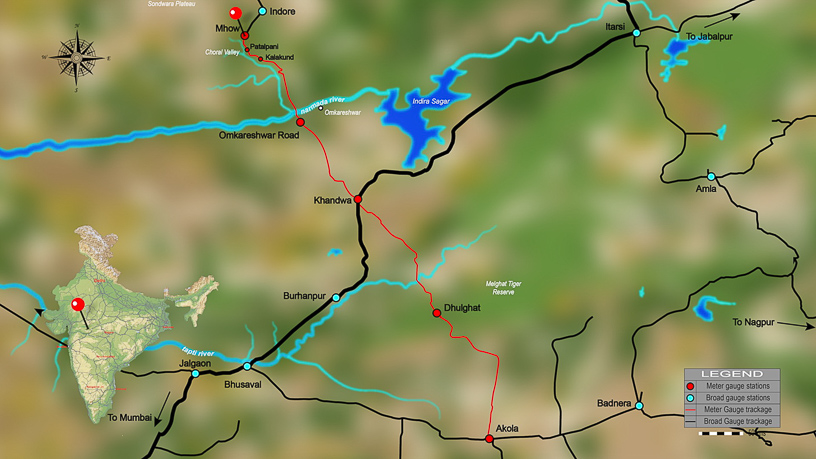 click on pic
click on pic
The section between Patalpani and Kalakund runs along the Choral river and with it’s numerous bridges, viaducts and tunnels, forms a fascinating backdrop in which to view the operations of this one hundred and fifty years old railway line.
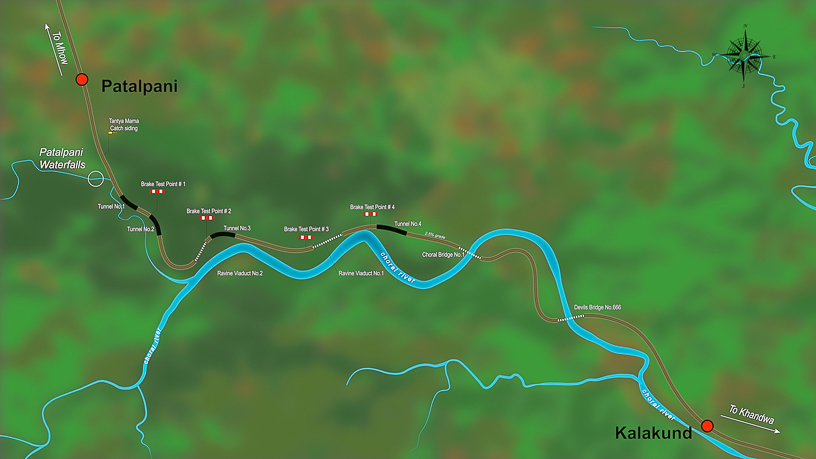 click on pic
click on pic
Mhow was once a busy station along the meter gauge route from Ajmer to Akola and it’s three platforms catered to the many trains serving the line.
Today a single platform caters to the remaining traffic whilst the other platforms are undergoing re-construction, waiting for the imminent arrival of the broad gauge trains from Indore.
To the south of the station is an extensive carriage yard as well as a diesel loco shed which is home to 18 YDM4 locomotives. Since this is an isolated meter gauge line, the shed is expected to carry out running repairs as well as periodic overhauls on the locomotives.
In it’s heyday, the shed had an allocation of over 100 steam locomotives before steam services were withdrawn in 1998.
Three rusting YP locomotives can still be seen lying abandoned in the shed, a standing testimony to the glorious days of steam .
The next station on the line after Mhow is Patalapani, significant in its importance as it is the start of the descent through the choral valley.
Even though we see some flat cars and tankers stabled here, barring some departmental trains freight no longer runs on the line and the only traffic the route sees, are the six passenger trains in each direction.
Tourists visiting the nearby patalpani waterfalls also disembark here and the falls are only a short walk from the station.
Ravine Viaduct no 2 is 120 mtrs long and rises about 50 mtrs from the valley floor making it the highest bridge on the line.
It was built in 1876 as a viaduct with 2 stone pillars, the demolished remains of which can still be seen here. In 1974 the alignment was changed and in its place stands today a five span steel structure .
Due to the sharp curves and steep 2.5% grade it is mandatory for all trains to conduct brake tests while descending from Patalpani to Kalakund. Brake tests are conducted at 4 designated locations along the line.
A red and white board along with a “T.P” – test point sign marks the spot where the brake tests are conducted. This is a simple procedure which involves bringing the train to a complete stop and then checking the brake pressure before proceeding again.
The 100 meter long Ravine Viaduct number 1 built in 1876 still stands today on its original stone pillars, a testimony to the skill and durability of the railway builders of their time. Trains are not double headed in this section and the other locomotive seen here Is actually a banker attached behind the lead loco. The banker will be shunted out at Kalakund and will later help train no 52964 uphill to Patalpani.
The route does not see the heavy passenger loads as on most of the other sections of Indian Railways but is sufficient enough to require the six pairs of daily trains.
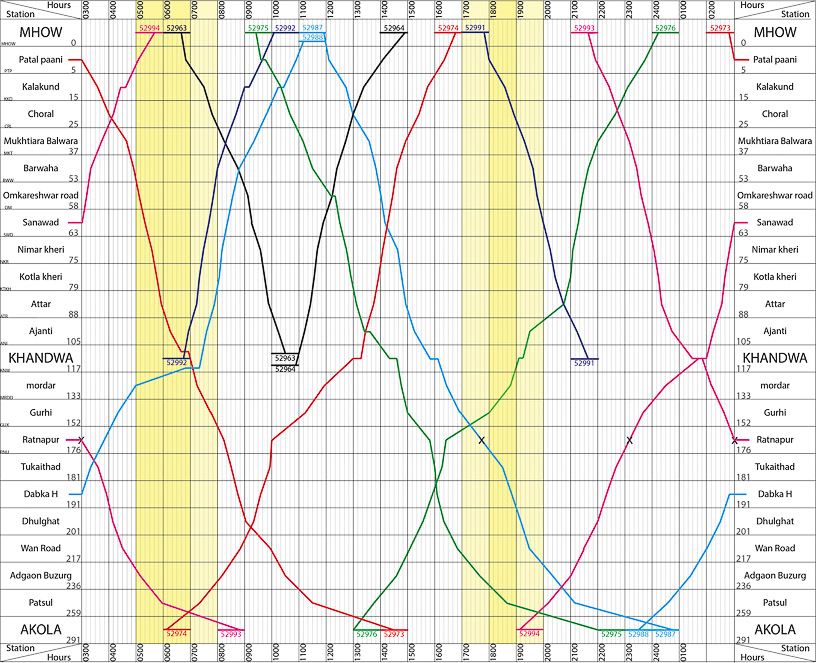 click on pic
click on pic
The railway runs through the densely forested areas of the Choral valley and in the absence of any roads the line serves as a roadway of sorts for the locals.
Constant maintenance of the line is required to keep it running smoothly and a sizable workforce is employed by the railways for it’s upkeep.
The permanent way inspector conducts routine inspections on his trolley and makes sure that there are no unauthorized or unsavory characters about the line.
Two bridges span the Choral river, aptly named Choral bridge no.1 and Choral bridge no.2.
Bridge no.2 is numbered 666, the devils number but has thankfully not witnessed any untoward incident…
The sleepy station of Kalakund lies at the bottom of the gradient of the choral valley.
It is an important station on the line due to the fact that bankers are attached here to all up hill trains heading for Patalpani and Mhow.
Bankers are mandatory for all uphill trains and protect trains from rolling back downhill in case of a coupler failure.
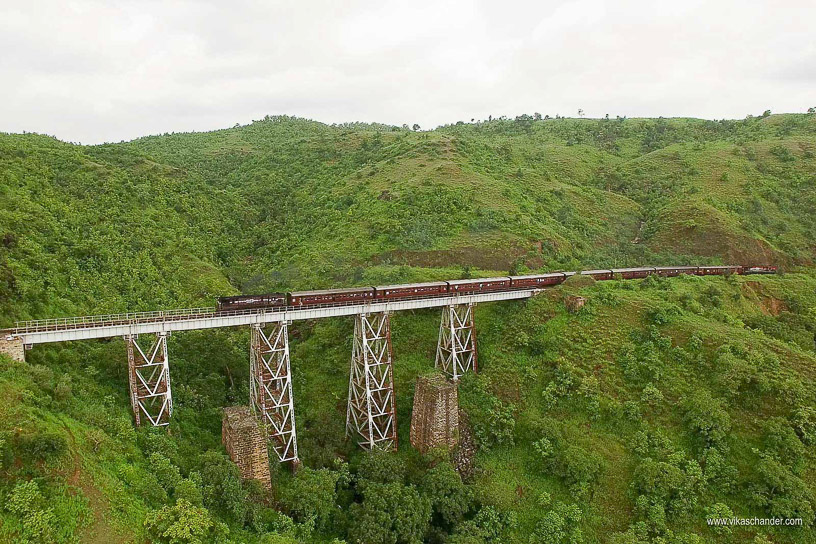
Back in the days of steam, an uphill train to Mhow banked by another steam locomotive must have been a treat for the senses ….
At a maximum permissible speed of 25 kmph, Train 52992 from Khandwa finally conquers the 1 in 40 grade from Kalakund. The train has taken 30 minutes to cover the 10 kms between Kalakund and Patalpani.
Bankers are sometimes attached to downhill trains and this is done to save time if another Mhow bound train was already at Kalakund. If one would have waited to release the banker after a train had left Patalpani, it would have resulted in a delay for the train already waiting at Kalakund, for the banker could only proceed from Patalpani once the single block between Patalpani and Kalakund was cleared.
Upon arriving at Kalakund, the double header detaches itself from its rake and the locos head out to the southern throat of the station…
…where they decouple and then reverse back on to their respective trains.
Soon it is time to depart and train no 52988 heads uphill to Mhow while train no 52975 departs for Akola.
We now head south east towards the Narmada, and the holy town of Omkareshwar. Omkareshwar is home to one of the 12 jyotirling shrines holy to the Hindus.
But that is not what draws us here as spanning the Narmada at Omkareshwar is also an 850 meter long railway bridge which has been around since the last 140 years.
Driving further south, we head towards Dhulghat. Dhulghat lies in the Melghat Tiger Reserve in Amravati District of Maharashtra. About 2 kms south east of the station lies a spiral which the locals refer to as Char ka Aankda or the figure of 4. This because the track plan of the spiral roughly represents the figure of 4 when written in Hindi or the devnagri script.
The spiral consists of a 16–span 193 meter long steel viaduct which spans a shallow valley.
Trains coming from Akola cross the viaduct and after completing a near 270 degree turn in about four minutes passes below the first span of the viaduct before going on to Dhulghat.
With broad gauge conversion around the corner one resigns themselves to the fact that the Char ka Aankda spiral will soon be abandoned altogether, becoming just another chapter in a history book. The ghat section between Patalpani and Kalakund with its 150 year old history would also form a prominent part of that chapter.
The spiral brought to end a most memorable rail fan trip for Shashanka, Rajit and myself and we hope other railfans would visit the line before it’s imminent demise….
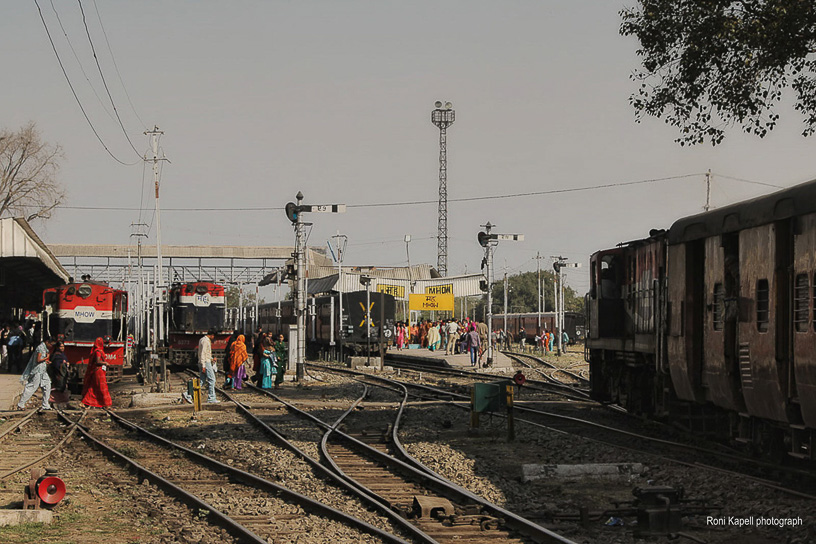
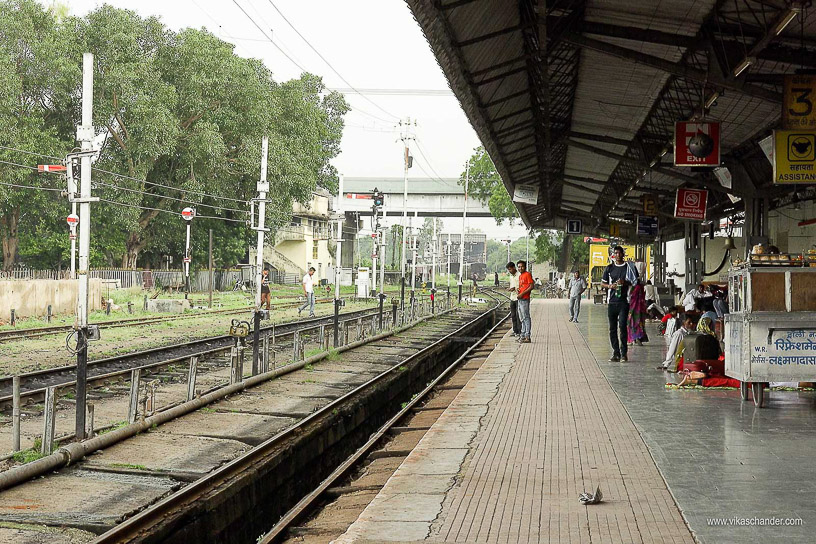
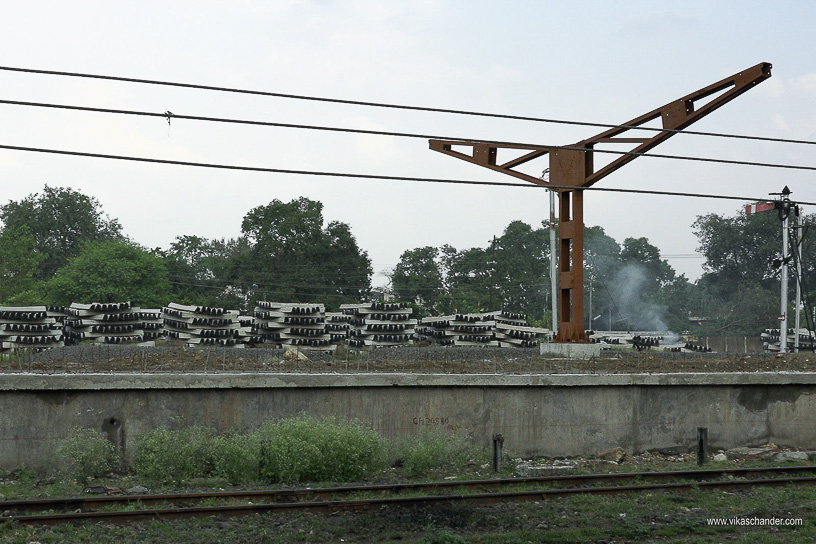
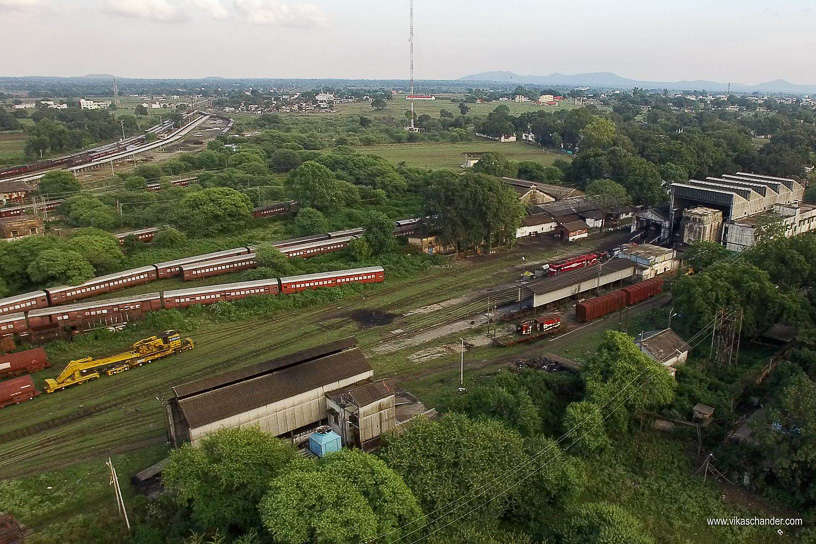
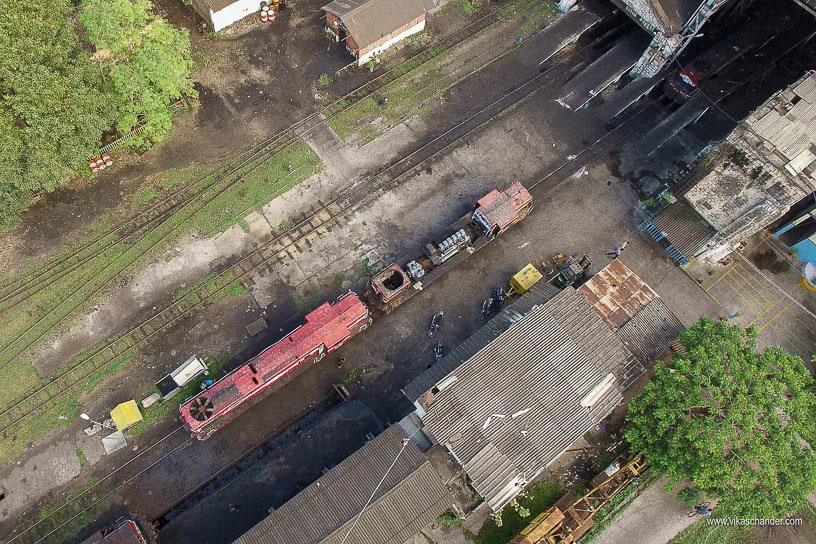
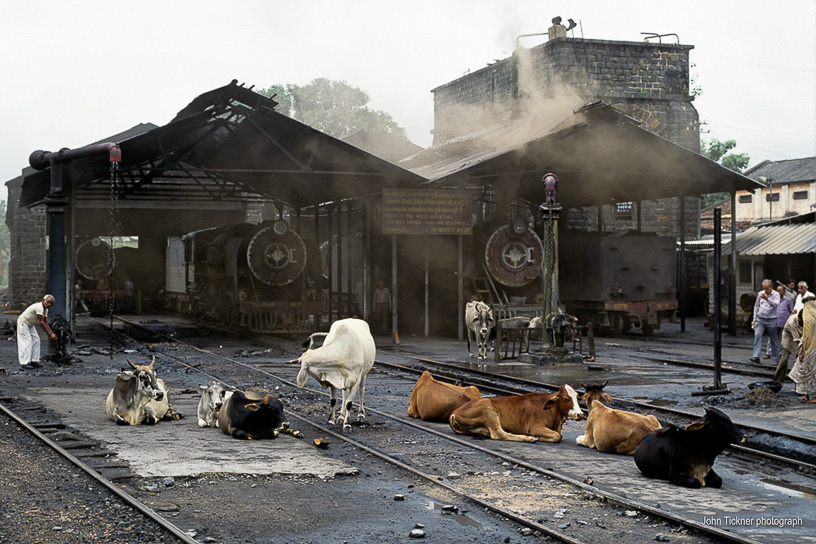
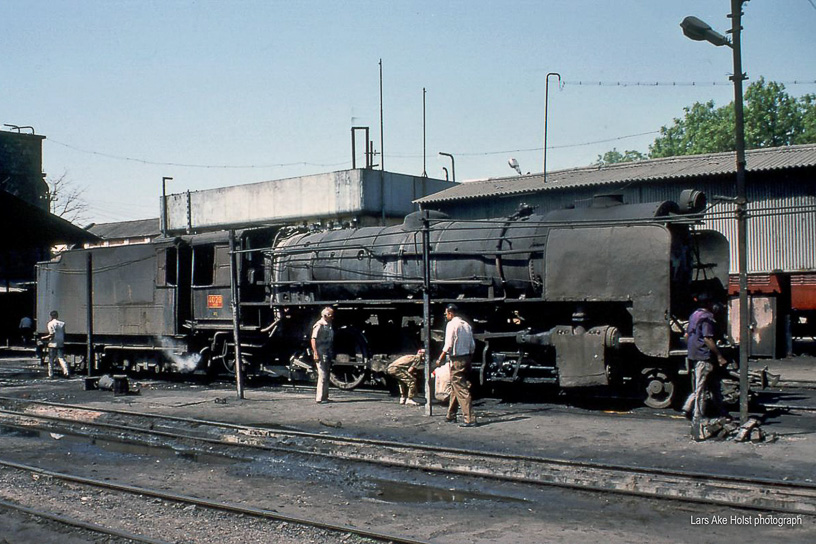
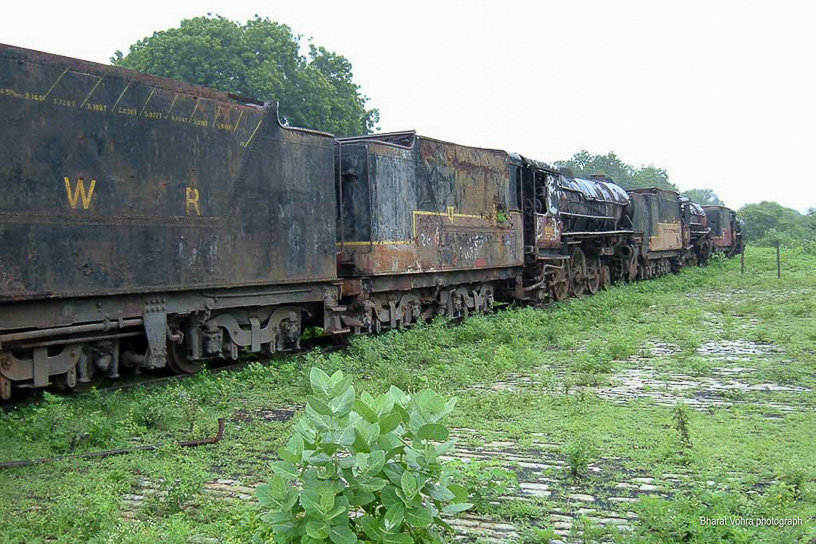
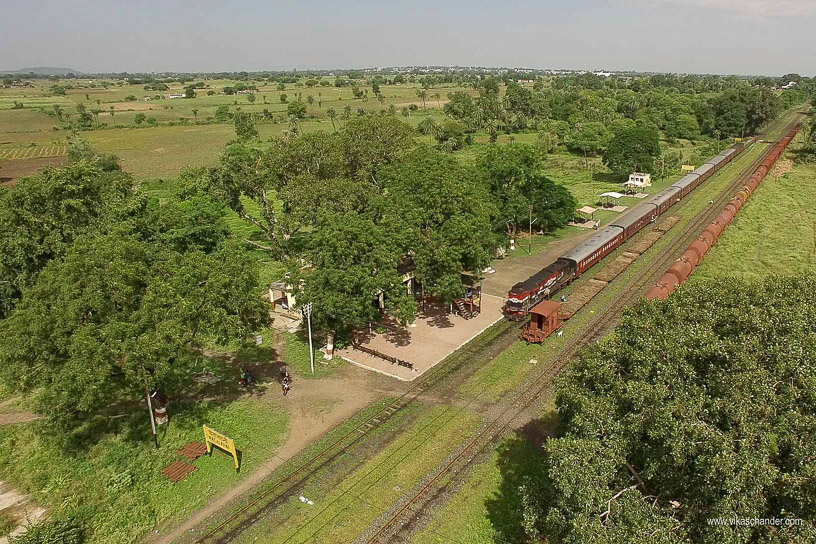
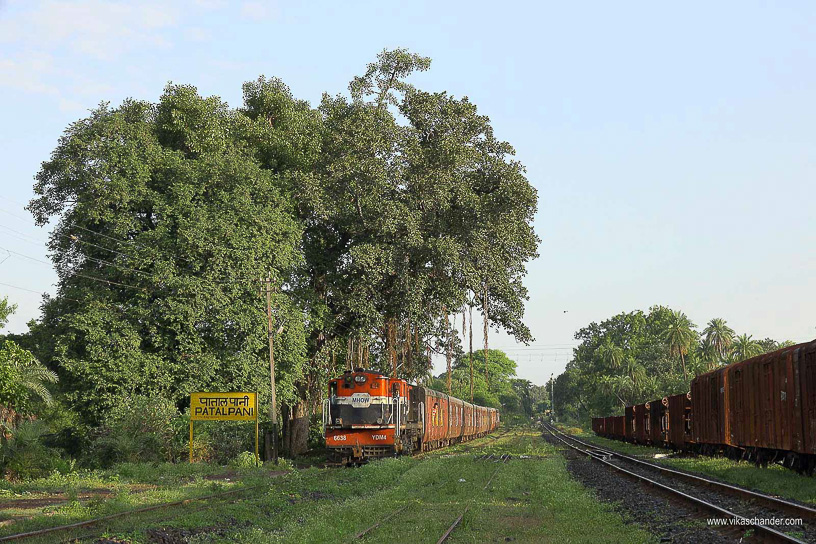
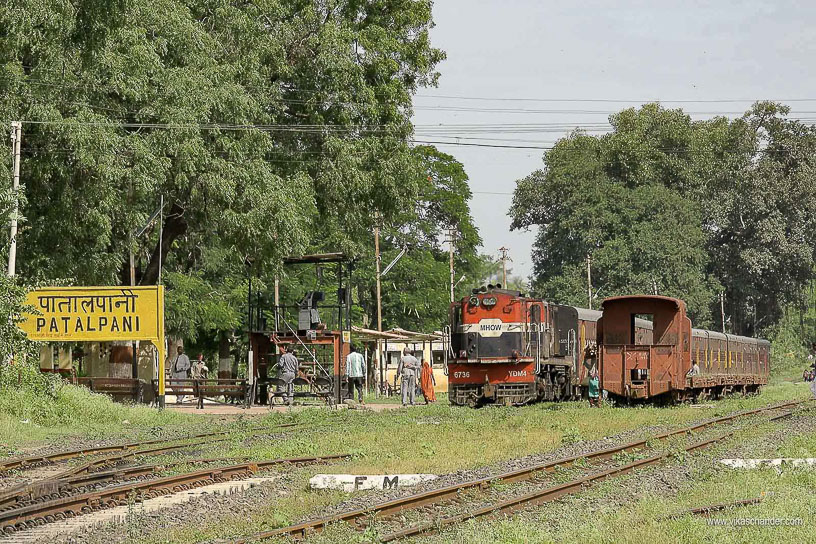
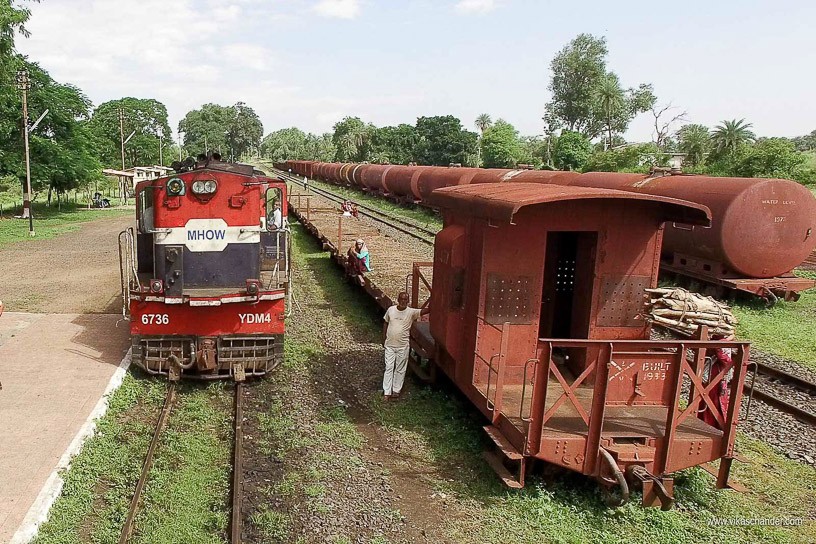
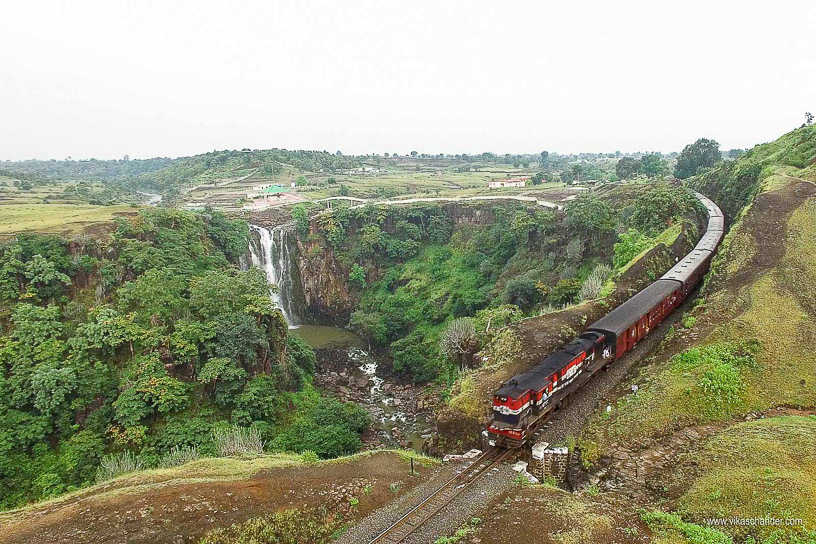
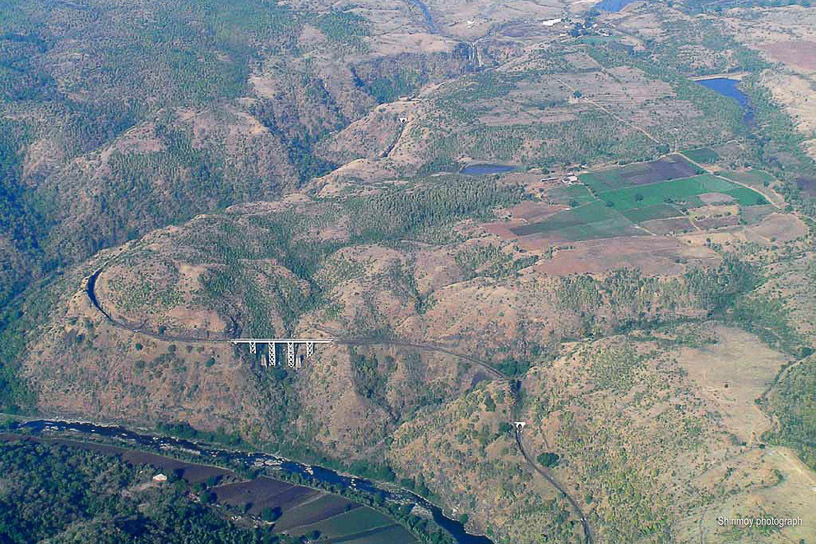
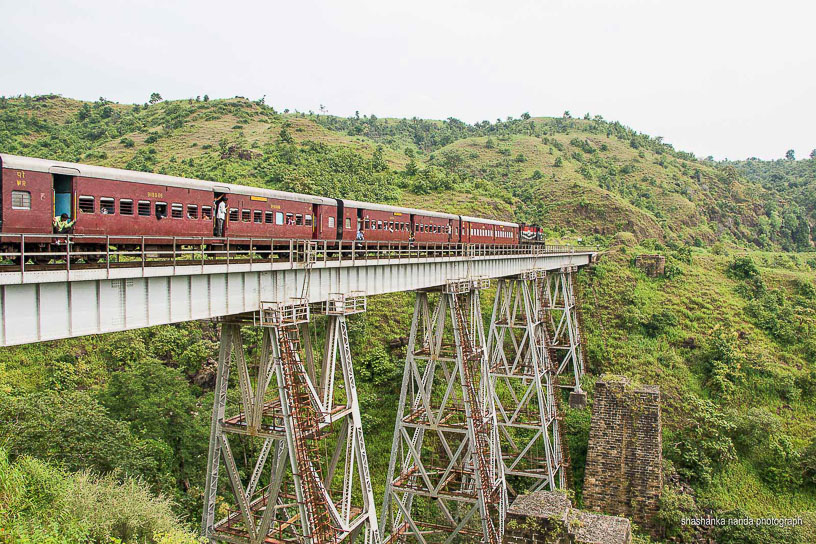

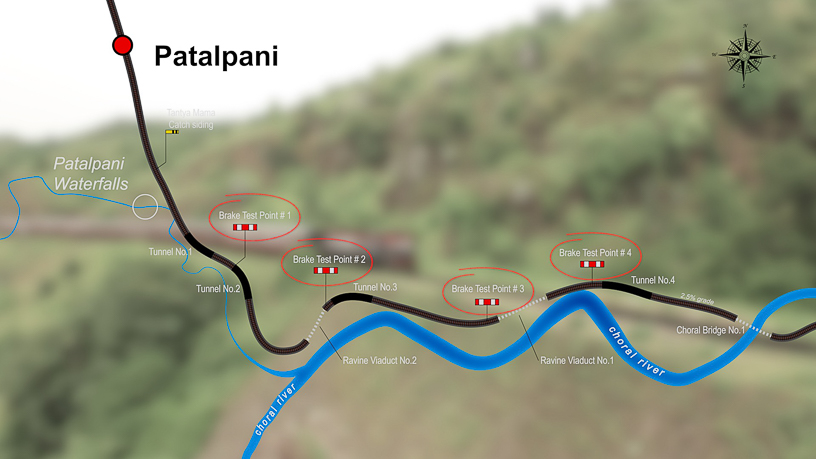
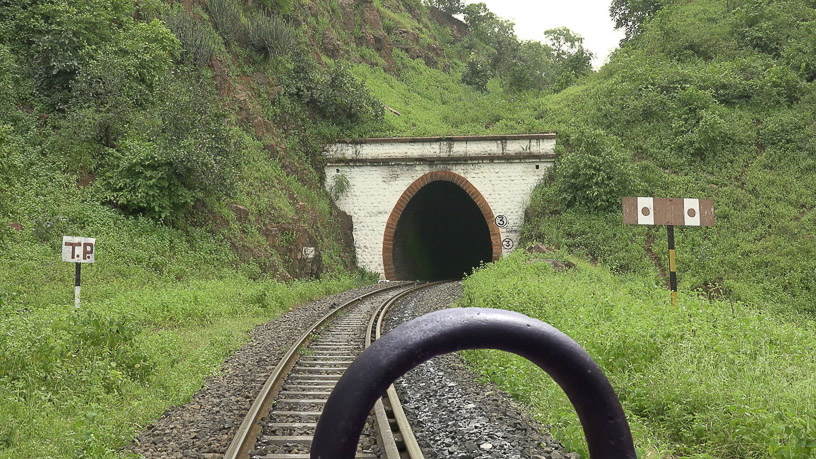
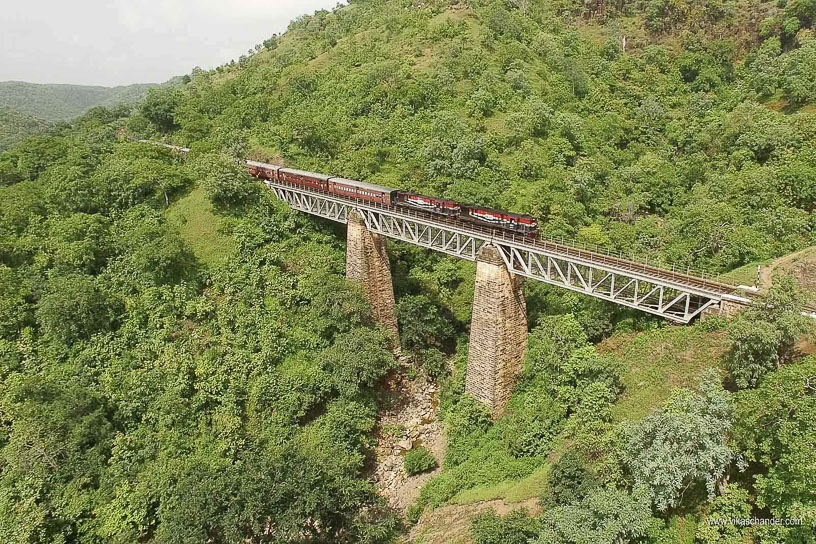
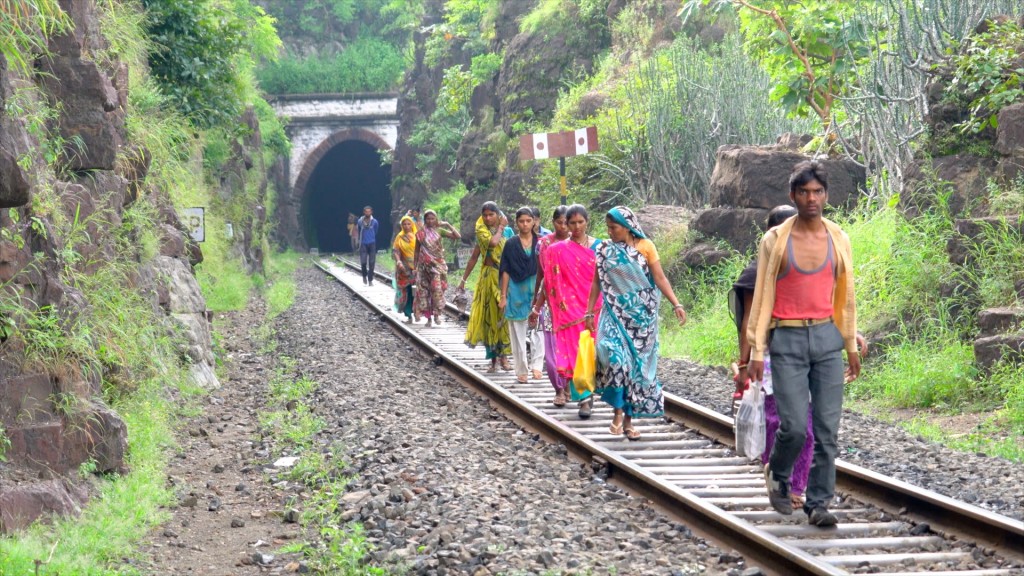
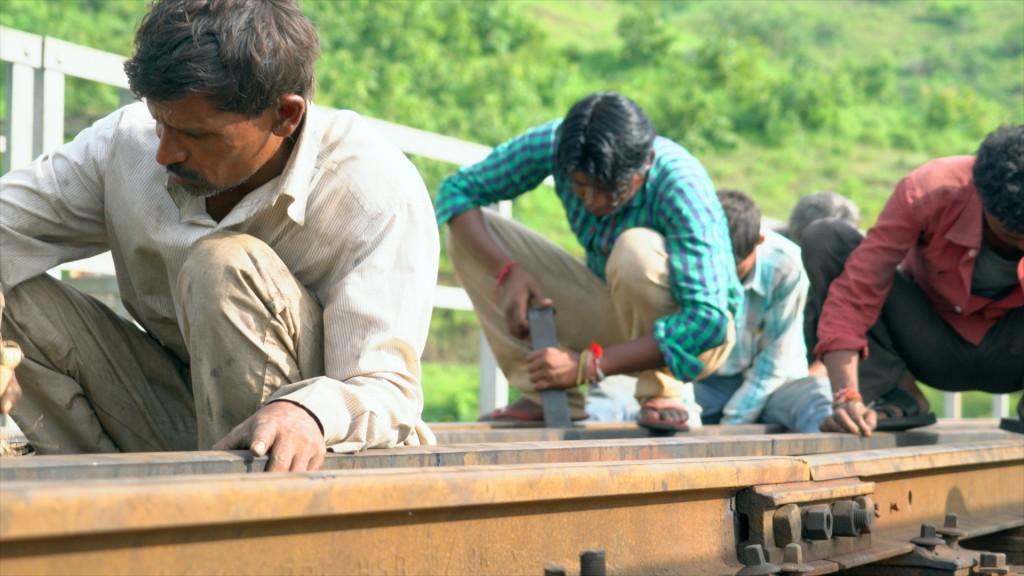
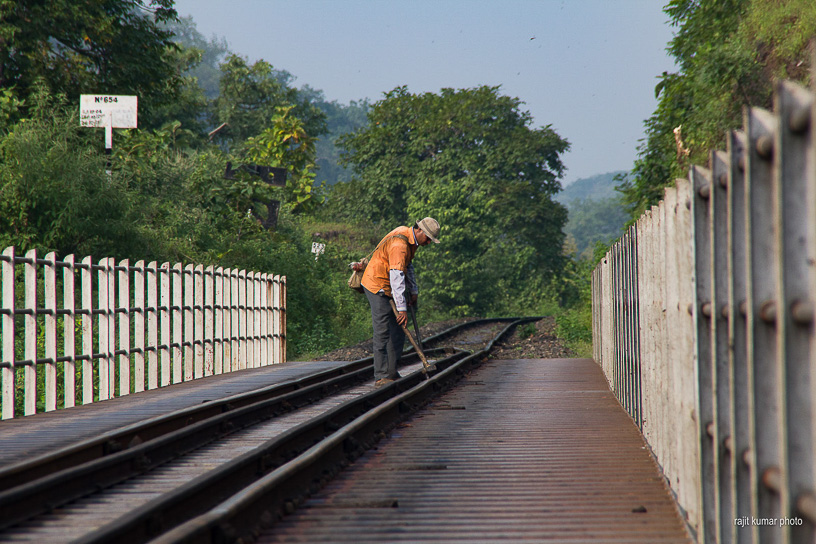
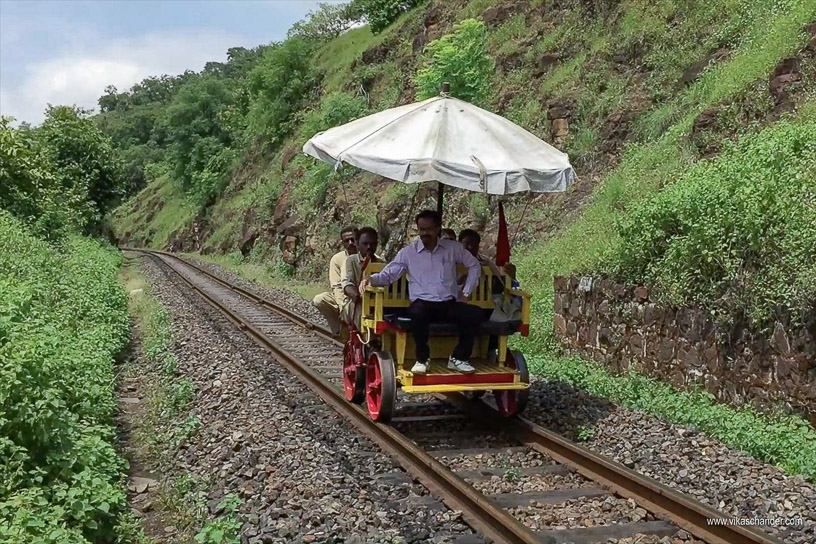
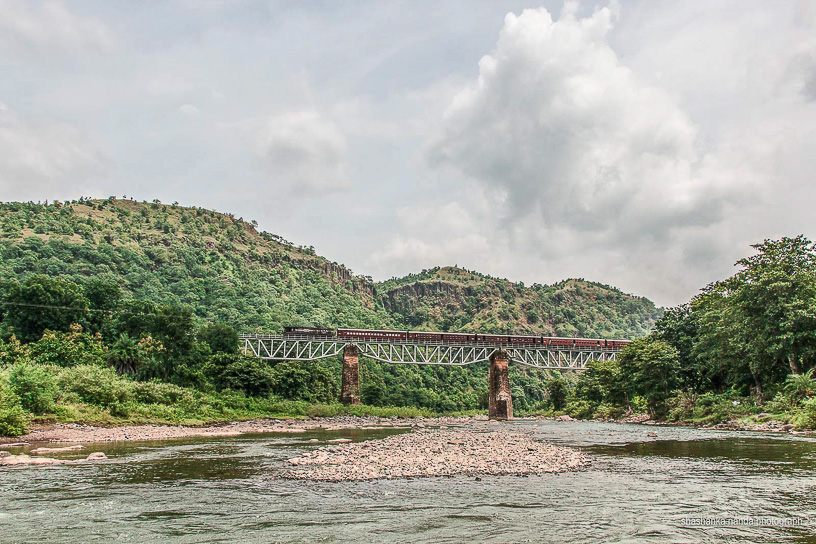
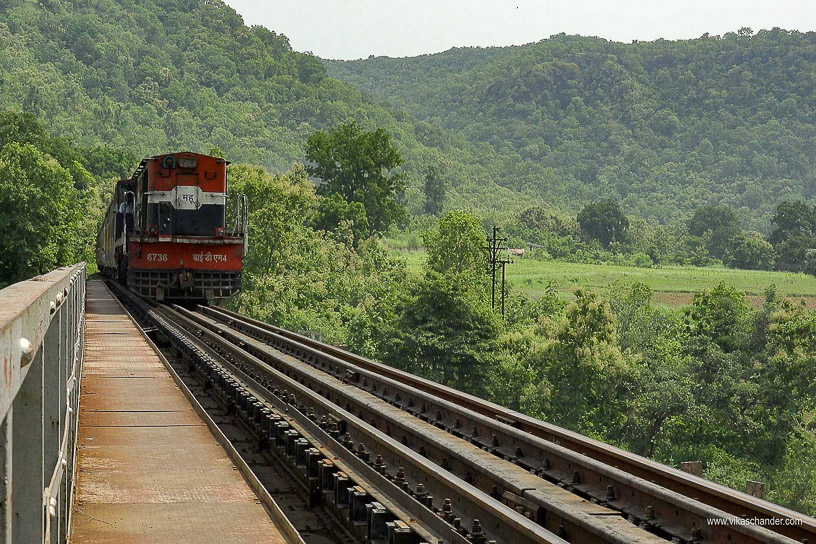
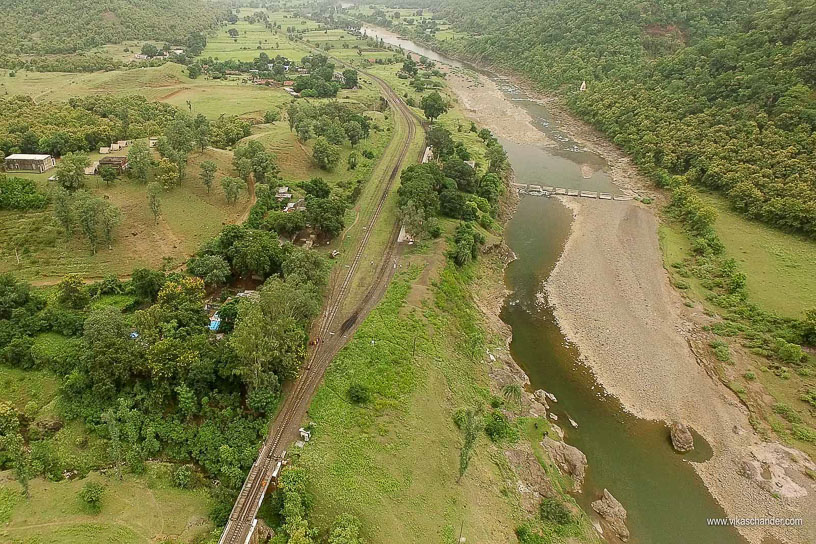
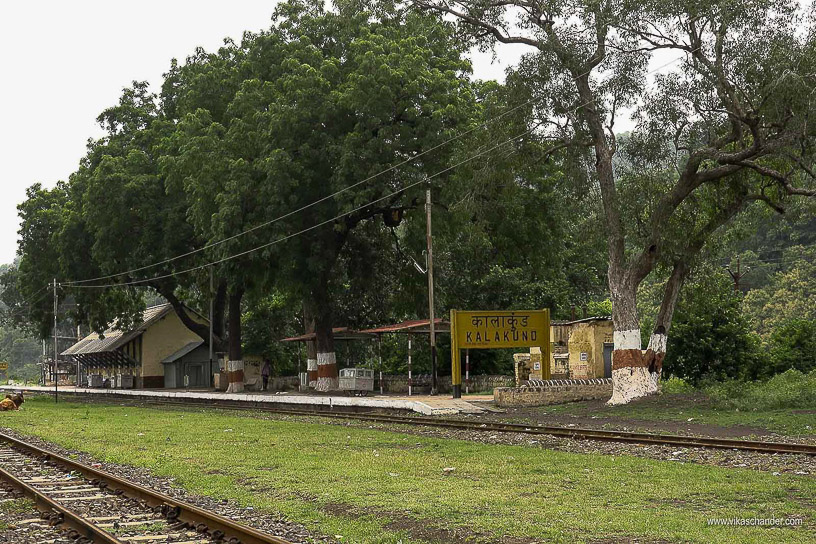
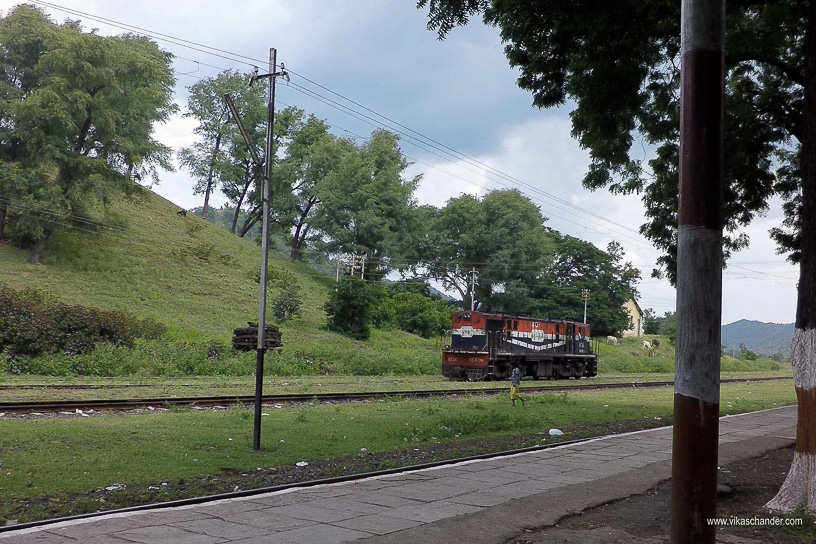
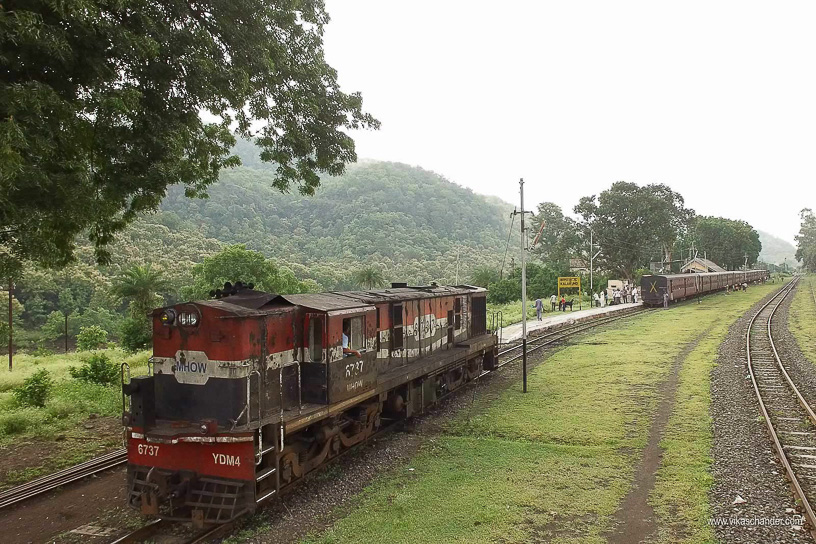
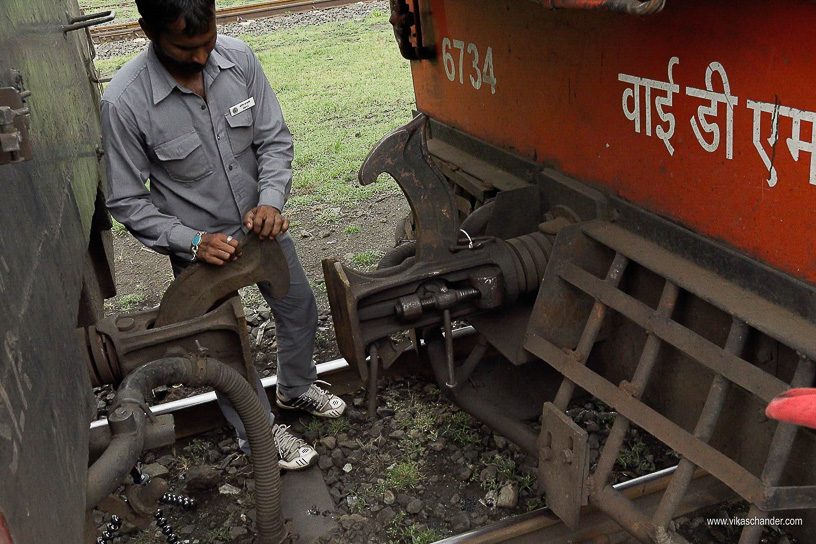
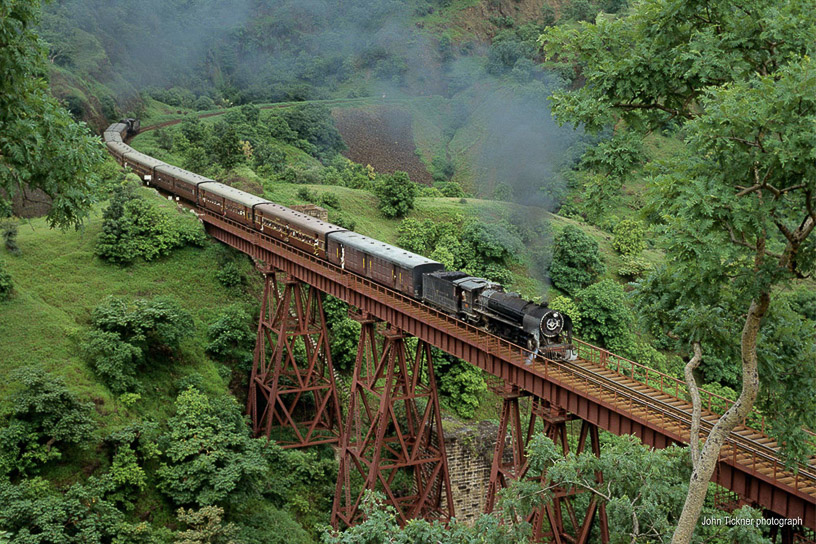
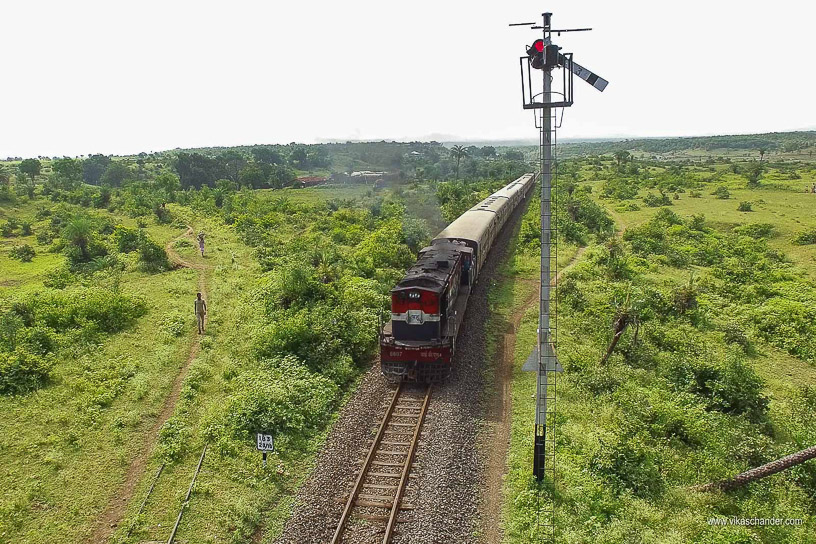
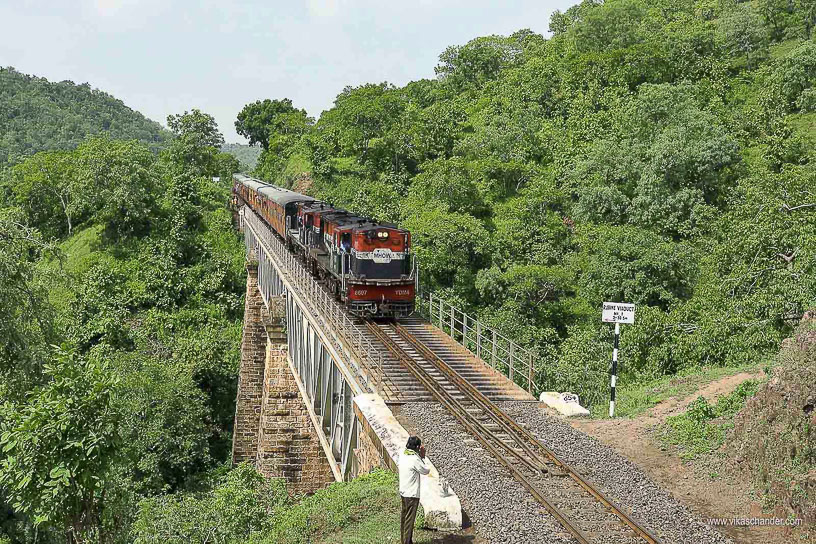
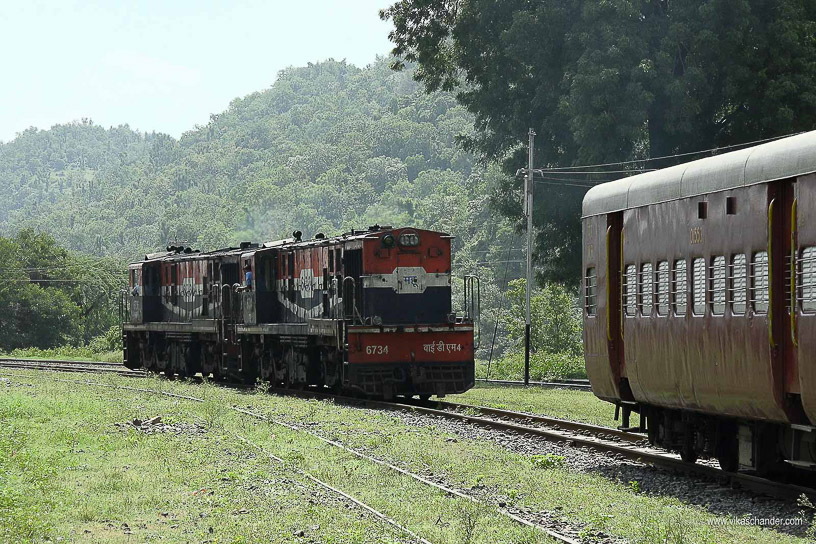
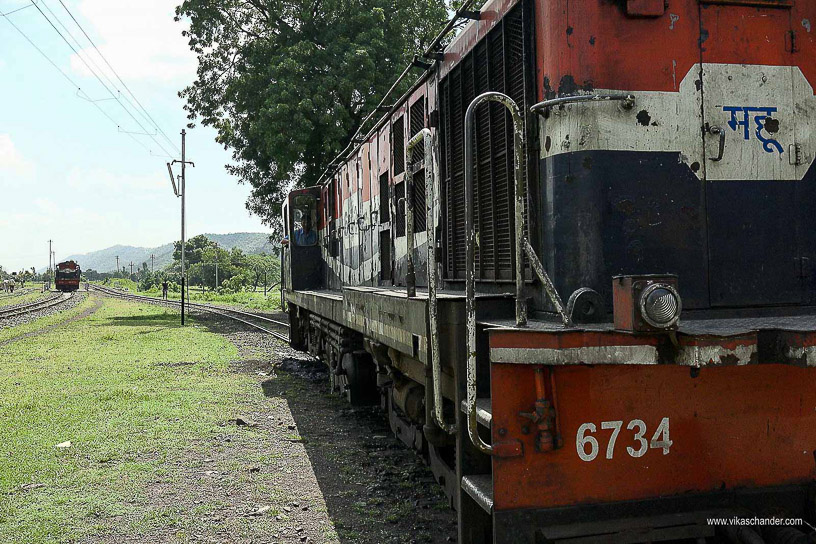
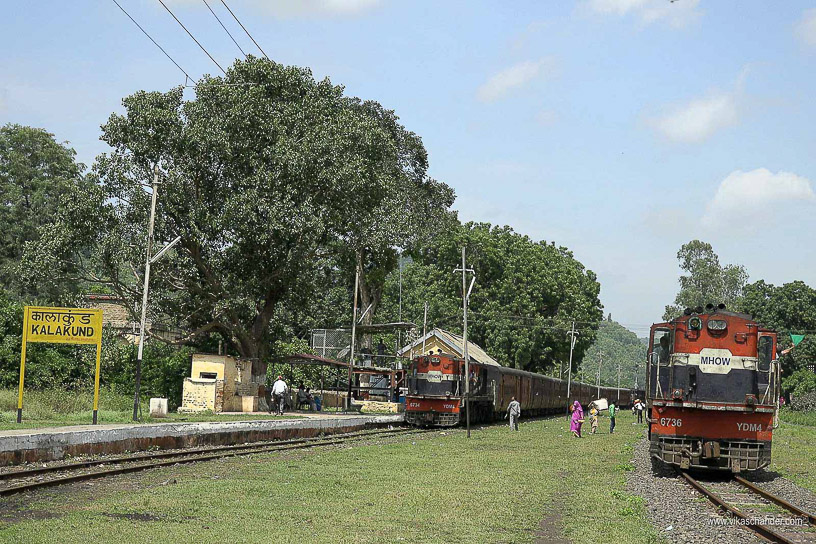
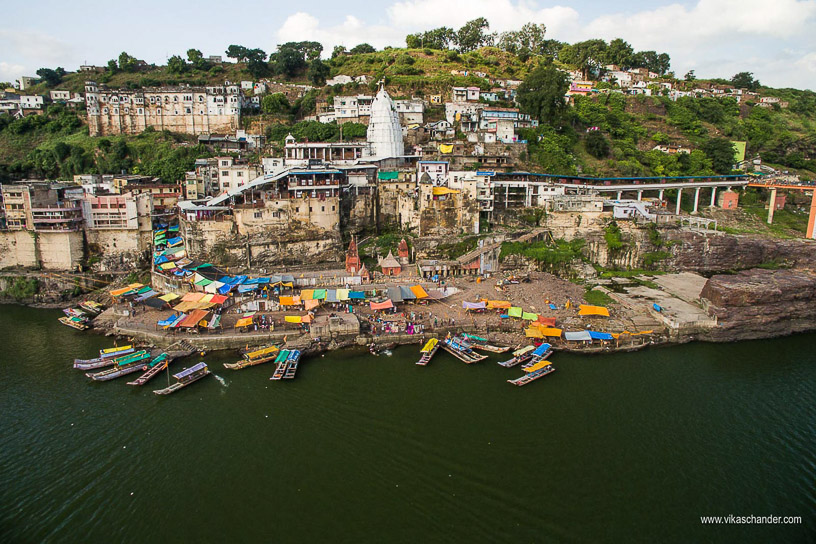
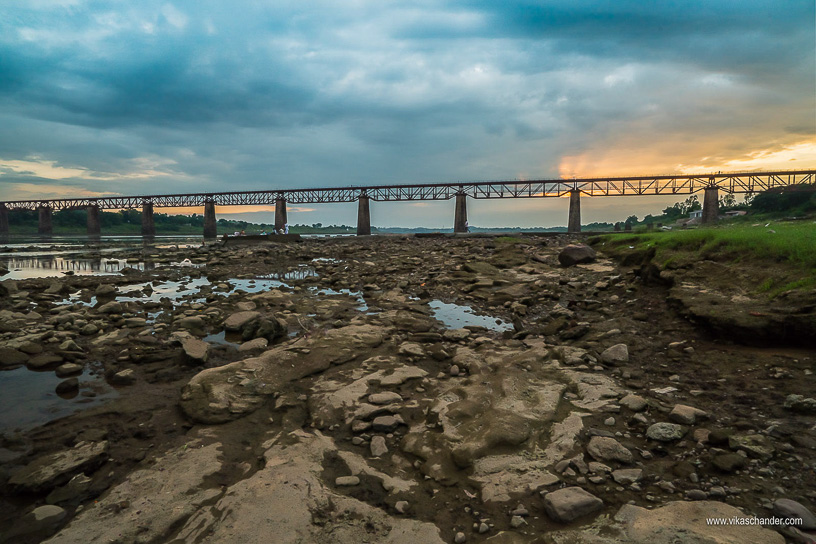
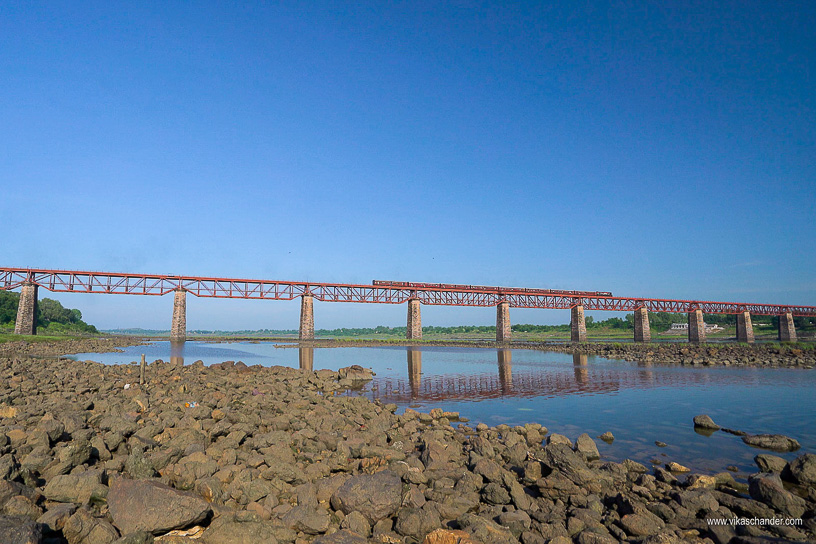
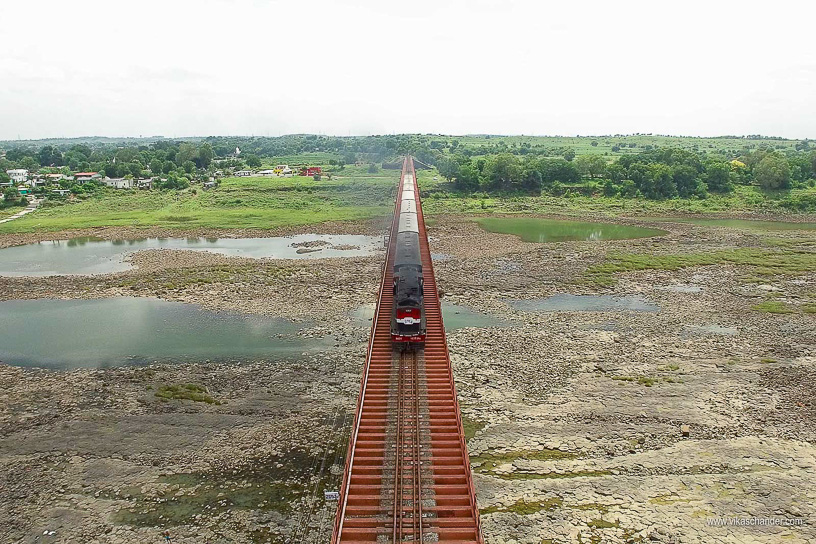
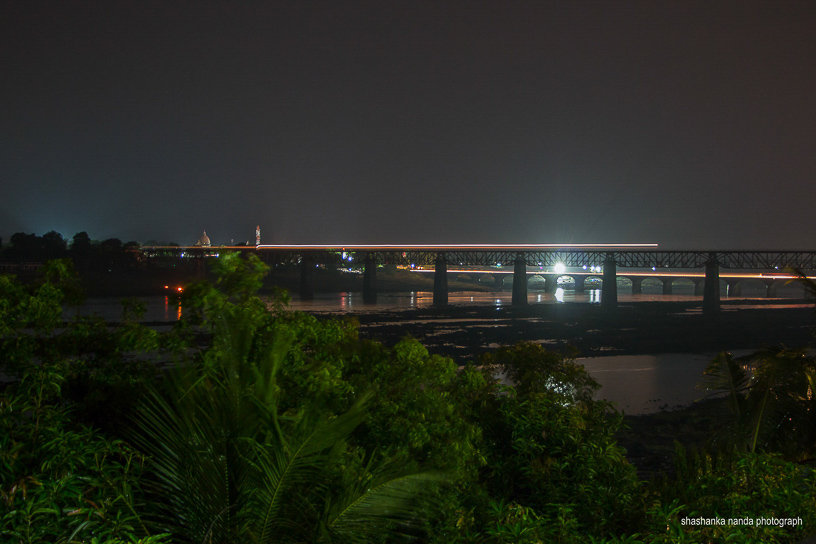
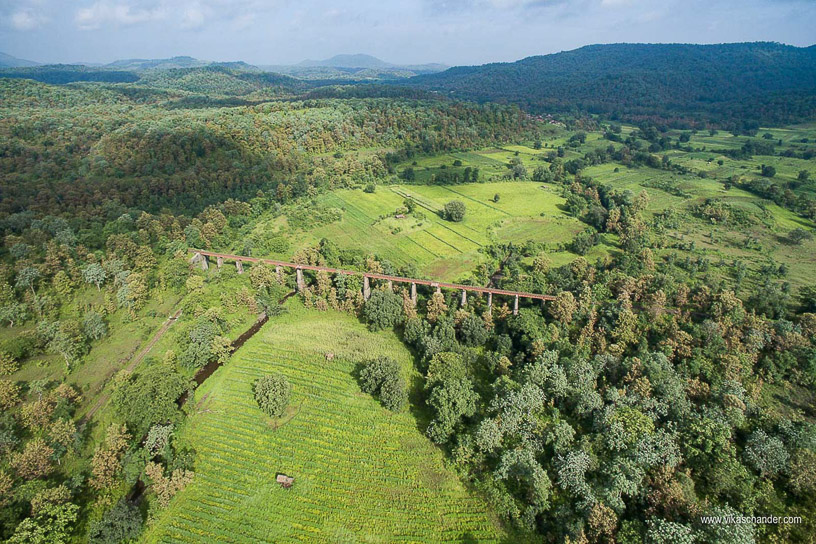
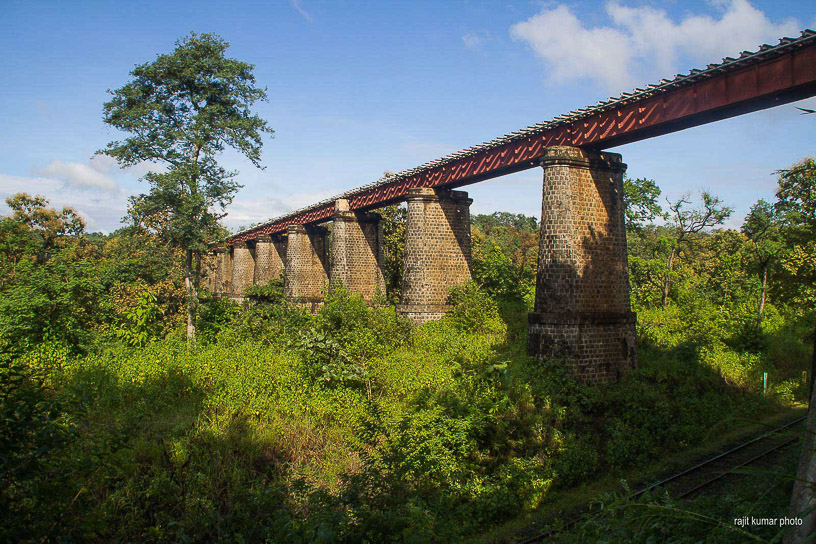
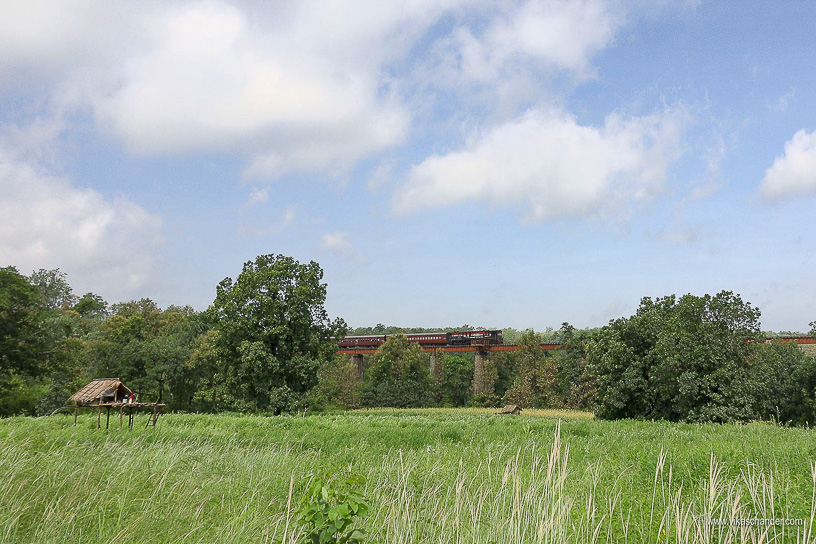
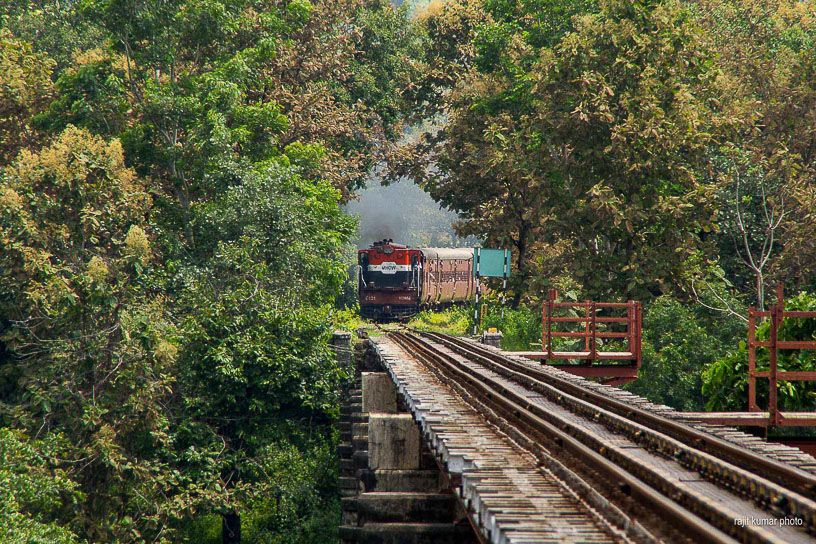
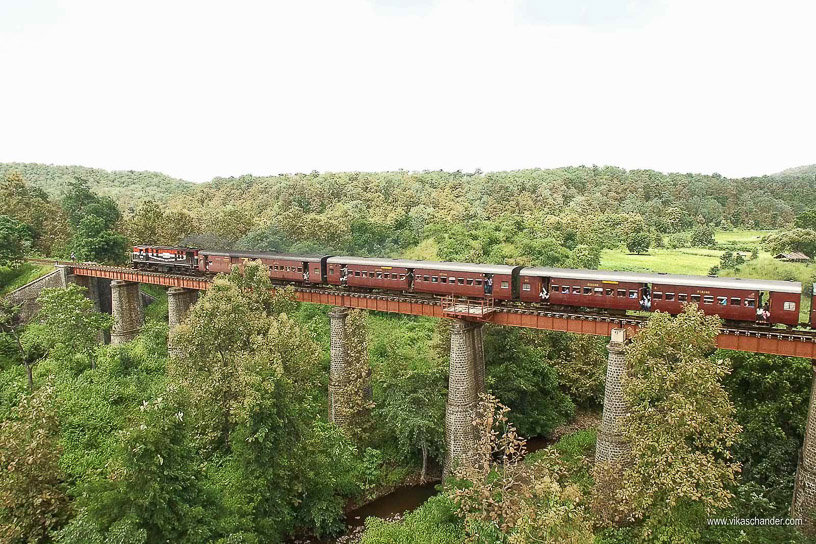
Outstanding Blog equal to that of Sikar – Churu Blog. Photo of train on Narmada river is Mindblowing. Akola Khandwa MG line is my most favourite Rail line.
sir,
outstanding coverage
as the line is closed now
one can see this magnificent M.G line in these pics and video
thanks to you…
Wonderful reporting.Keep it up……..
Sir,
As i see the above erstwhile Meter Gauge train working in Western Railway – erstwhile BB & CI, right from MHOW to Khandwa covering the whole and wide range of hilly areas of Vindhya especially lines passing via Ghats – Tunnels and mighty Narmada river, makes me recollect my own journey via all these tracks of the years 1980s- 1990s at my best enjoying all the natural scenery while riding of trains by the erstwhile Steam Engines commencing from Khnadwa. I hereby applaud CHEERS loud for all those who visit this instant website and observe the traditional natural beauty now proposed for Gauge conversion into BG. I also hereby heartily congratulate the Hon’ble D R M at Ratlam – Western Railway for all his sincere efforts in maintaining the existing M G tracks as erected by Anglo British during pre-independence era. with best wishes.
wonderfully shot and for a person like me who has limited knowledge on the northern part of india its a great piece of info
Just amazing. No words to describe.
Best imagination for camera angles
Indeed a great trip report, only last week did I had the previledge to travel by this train from Mhow to Khandwa, and back, I did see the banker being attached at kalakund and its detatchment at Patalpani. The journey was memorable, I did see a BG engine stabled at the newly laid BG liine from Indore it was the same RTM loco which was used during the speed trial run from INDB to Mhow. After watching this I have decided to travel further from KNW to AK.
Hey Vikas, Many thanks for this video which I came across today while searching for few videos related to railway. As I grown up seeing/traveling on this railway track, your video was really mesmerizing those old days, but I’ve a complaint with you that during the whole video I was eagerly awaiting the turn to hear my home town Barwah’s mention in it , but unfortunately you’ve ignored it completely. It might be an icing on the cake for an enthusiast person like me (who feel proud when ever read/heard about his own home town in news/articles), but you made me felt sad :(. Hope you get it.
Anyways it was an indeed a great experience watching your video. Kudosss man.
Regards,
Paras Kumar Jain
BEST ARTICLE THANKS A LOT FOR THIS AS A RETIRED RAILWAY MAN
If you permit, I would like to share this – sure thing go ahead !
Pity you didnt see it back when it was even more glorious with 2 Steam Locos puffing….it was one sight to behold & the trip I used to wait for every year for so many years to go from Indore to Khandwa to catch the Bombay Mail to Calcutta – that was childhood, you brought a piece of it back…Beautiful
(If you permit, I would like to share this)
What a documentary! Your railroad documentaries are one of the best in the world – the history and story of the everyday life takes your audience to that place! Not to mention the incredible aerial shots and superb editing of the film.
Can’t wait to see the next one!
Above all this is true: we are all nothing but logical culminations of the roads our ancestors have collectively walked. We cannot understand ourselves if we do not understand our history. Recording contemporary railway history, even as it faces its own demise, to this superb standard, and with this love for precision and detail, is a great service for which future generations of Indians will thank you, even if the current generation do not.
Vikas Chander, allow me to salute you with the deepest humility. You are a great photographer, a better historiographer and a Indian to make us all proud!